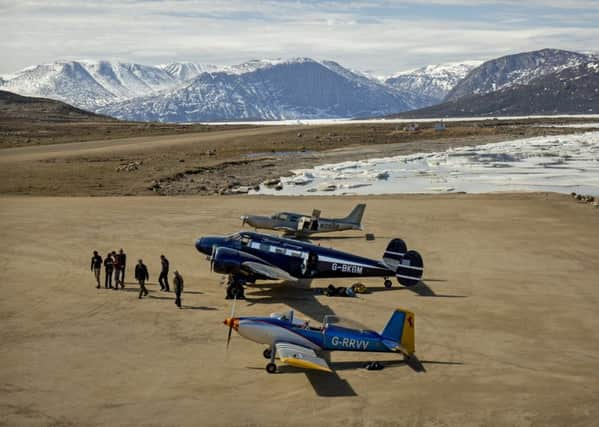Vintage planes make epic flight from Wick to Canada


The planes – a 65-year-old Beech 18, a homemade kit-built Van’s RV8 and a 1980 Saratoga – set out from Wick on 20 June and spent ten days flying across the Arctic via Iceland and Greenland.
The spectacular trip was organised by aircraft enthusiasts Vintage Air Rally and captured on film by acclaimed photo-journalist Timothy Allen, best known for his work on the BBC series The Human Planet.
Advertisement
Hide AdAdvertisement
Hide AdAllen said: “At times what I was witnessing didn’t register as real. I was looking out the plane window at vintage aeroplanes flying over the most spectacular scenery in some of the most remote points of the planet.
“It was astonishing and exhilarating. It’s a real privilege to see that first hand.”
The planes started their journey in Wick and flew up to four or five hours a day, making overnight stops on often remote airstrips in Iceland, Greenland and Canada.
Flying in such inhospitable skies in such small aircraft also held its dangers. “It was scary as well,” Allen, 46, said. “I was on edge a lot of the time.
“Two of the aeroplanes were single engine, so when you flew over any large stretches of water we had to wear immersion suits, just in case the engine stops.
“Because if the engine does stop, the only way is down. And if you don’t have an immersion suit on you’d die within five minutes in that water. An immersion suit gives you an extra 45 minutes in which time you might hopefully find a life raft.
“The fact that we had to fly in immersion suits – like you might wear for deep sea diving – shows you the kind of risks we were taking. We had to have a lot of trust in the machinery.”
The team also had to watch out for the potentially lethal process of icing – where the Arctic temperatures cause ice to start forming on the outside of the plane or the engine.
Advertisement
Hide AdAdvertisement
Hide Ad“That’s a real problem when flying in the Arctic,” Allen said.
“It’s the one thing that everyone was very scared of. If you notice icing starting to appear on the wings then you have to drop down in altitude to where temperatures are higher.”
Sam Rutherford, who piloted the Saratoga, said: “The aim is to demonstrate that even decades after construction, these old aircraft are still capable of achieving difficult and demanding routes.”